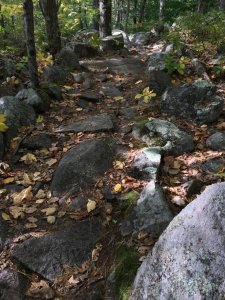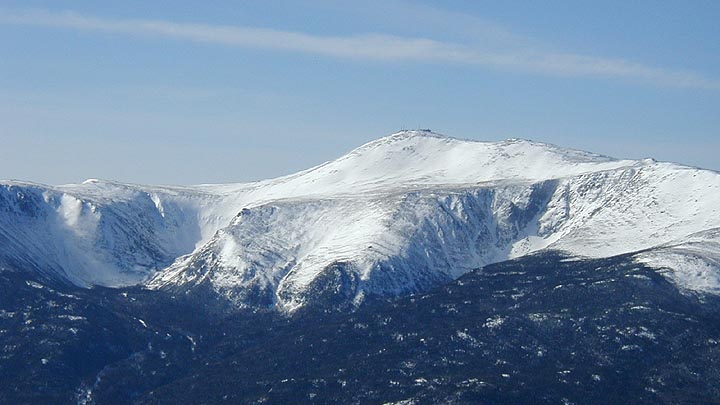Breakthroughs in sports are often achieved through technique, or tactics, but sometimes they are conceptual.
In this thread, I will be discussing how my season of hiking mountain ranges inspired thoughts about skiing.
I spend the off season hiking the mountain ranges around Phoenix. The trails can be pretty tough with loose rocks, gravel, steep grades and uneven surfaces. The uphill hikes are hard work, but relatively safe. Downhill, however can be somewhat treacherous with loose footing. Coming off a martial arts career that had left me with multiple ankle and knee surgeries, I was understandably worried about re-injury. I would come down the trails very slowly and carefully, sitting back on my heels and side stepping down the steeper grades. Mt feet would often slide out and I would have to either sit down, or put a hand down to save myself. It was slow hard work, but relatively safe with little chance of major injury.
One day, whilst taking a break at the side of the trail, two ladies passed me on the way down. To my amazement, they were running down the hill with grace and ease. Instead of fighting gravity, they embraced it, allowing themselves to be pulled down the hill. Their weight forwards, they controlled their descent by leaping from side to side on the rocks. Most of all, they looked effortless. They flowed.
I sat there for a long time considering what I had just seen. The risk of injury seemed massive. Falling at speed on a rocky downhill trail could have dire consequences, but the risk of falling also seemed much less than what I had been doing. Plus, there were keeping their joints pointed downhill, putting much less strain on them than my sideways butt sliding technique.
There are many better ways to do things, but sometimes it takes a leap of faith to put it in motion. I strapped on my backpack, tightened up my boots and took that leap. The first ten yards were very uncertain, feeling that the speed could get away from me. But then I relaxed and got in a rhythm, leaping from side to side to control my descent. It became easy, effortless and fun. I realized that I was now embracing gravity instead of fighting it, and despite the increase in speed, I was safer from injury and in more control. Instead of skidding on my heels, I felt sure footed with my weight over the balls of my feet.
This analogy has carried over to my skiing, Back seat and sideways may feel like a safe way to get down the hill, but forwards and downhill is more controlled, and more fun. You just have to take that leap of faith.

In this thread, I will be discussing how my season of hiking mountain ranges inspired thoughts about skiing.
I spend the off season hiking the mountain ranges around Phoenix. The trails can be pretty tough with loose rocks, gravel, steep grades and uneven surfaces. The uphill hikes are hard work, but relatively safe. Downhill, however can be somewhat treacherous with loose footing. Coming off a martial arts career that had left me with multiple ankle and knee surgeries, I was understandably worried about re-injury. I would come down the trails very slowly and carefully, sitting back on my heels and side stepping down the steeper grades. Mt feet would often slide out and I would have to either sit down, or put a hand down to save myself. It was slow hard work, but relatively safe with little chance of major injury.
One day, whilst taking a break at the side of the trail, two ladies passed me on the way down. To my amazement, they were running down the hill with grace and ease. Instead of fighting gravity, they embraced it, allowing themselves to be pulled down the hill. Their weight forwards, they controlled their descent by leaping from side to side on the rocks. Most of all, they looked effortless. They flowed.
I sat there for a long time considering what I had just seen. The risk of injury seemed massive. Falling at speed on a rocky downhill trail could have dire consequences, but the risk of falling also seemed much less than what I had been doing. Plus, there were keeping their joints pointed downhill, putting much less strain on them than my sideways butt sliding technique.
There are many better ways to do things, but sometimes it takes a leap of faith to put it in motion. I strapped on my backpack, tightened up my boots and took that leap. The first ten yards were very uncertain, feeling that the speed could get away from me. But then I relaxed and got in a rhythm, leaping from side to side to control my descent. It became easy, effortless and fun. I realized that I was now embracing gravity instead of fighting it, and despite the increase in speed, I was safer from injury and in more control. Instead of skidding on my heels, I felt sure footed with my weight over the balls of my feet.
This analogy has carried over to my skiing, Back seat and sideways may feel like a safe way to get down the hill, but forwards and downhill is more controlled, and more fun. You just have to take that leap of faith.
Last edited by a moderator:


